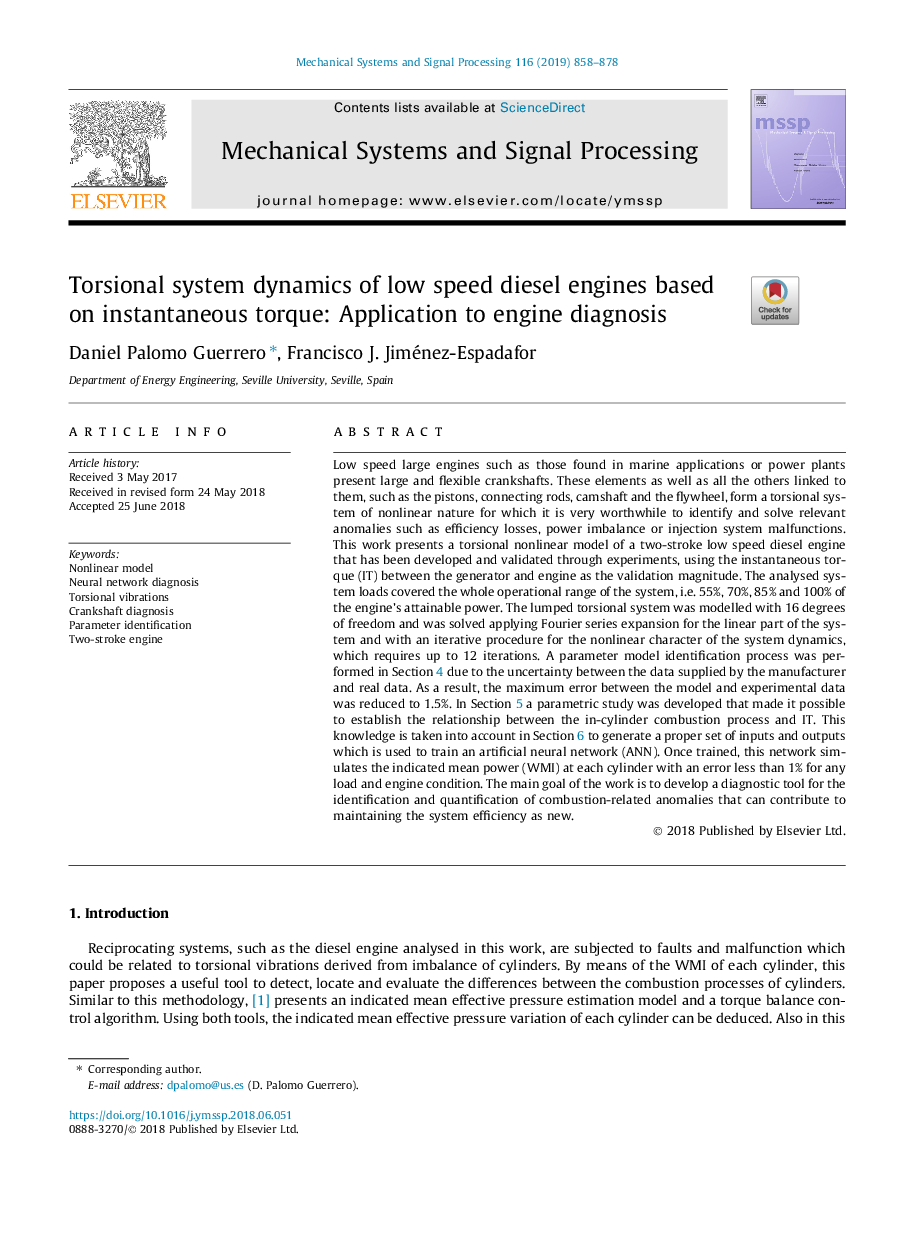| کد مقاله | کد نشریه | سال انتشار | مقاله انگلیسی | نسخه تمام متن |
|---|---|---|---|---|
| 6953525 | 1451819 | 2019 | 21 صفحه PDF | دانلود رایگان |
عنوان انگلیسی مقاله ISI
Torsional system dynamics of low speed diesel engines based on instantaneous torque: Application to engine diagnosis
ترجمه فارسی عنوان
دینامیک سیستم پیچشی موتورهای دیزلی با سرعت پایین بر اساس گشتاور لحظه: کاربرد به تشخیص موتور
دانلود مقاله + سفارش ترجمه
دانلود مقاله ISI انگلیسی
رایگان برای ایرانیان
کلمات کلیدی
مدل غیر خطی، تشخیص شبکه عصبی، ارتعاشات پیچشی، تشخیص میل لنگ، شناسایی پارامتر، موتور دو سکته،
موضوعات مرتبط
مهندسی و علوم پایه
مهندسی کامپیوتر
پردازش سیگنال
چکیده انگلیسی
Low speed large engines such as those found in marine applications or power plants present large and flexible crankshafts. These elements as well as all the others linked to them, such as the pistons, connecting rods, camshaft and the flywheel, form a torsional system of nonlinear nature for which it is very worthwhile to identify and solve relevant anomalies such as efficiency losses, power imbalance or injection system malfunctions. This work presents a torsional nonlinear model of a two-stroke low speed diesel engine that has been developed and validated through experiments, using the instantaneous torque (IT) between the generator and engine as the validation magnitude. The analysed system loads covered the whole operational range of the system, i.e. 55%, 70%, 85% and 100% of the engine's attainable power. The lumped torsional system was modelled with 16 degrees of freedom and was solved applying Fourier series expansion for the linear part of the system and with an iterative procedure for the nonlinear character of the system dynamics, which requires up to 12 iterations. A parameter model identification process was performed in Section 4 due to the uncertainty between the data supplied by the manufacturer and real data. As a result, the maximum error between the model and experimental data was reduced to 1.5%. In Section 5 a parametric study was developed that made it possible to establish the relationship between the in-cylinder combustion process and IT. This knowledge is taken into account in Section 6 to generate a proper set of inputs and outputs which is used to train an artificial neural network (ANN). Once trained, this network simulates the indicated mean power (WMI) at each cylinder with an error less than 1% for any load and engine condition. The main goal of the work is to develop a diagnostic tool for the identification and quantification of combustion-related anomalies that can contribute to maintaining the system efficiency as new.
ناشر
Database: Elsevier - ScienceDirect (ساینس دایرکت)
Journal: Mechanical Systems and Signal Processing - Volume 116, 1 February 2019, Pages 858-878
Journal: Mechanical Systems and Signal Processing - Volume 116, 1 February 2019, Pages 858-878
نویسندگان
Daniel Palomo Guerrero, Francisco J. Jiménez-Espadafor,
